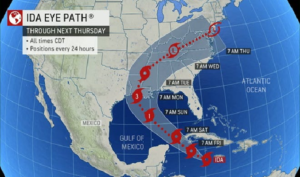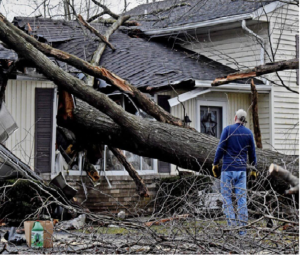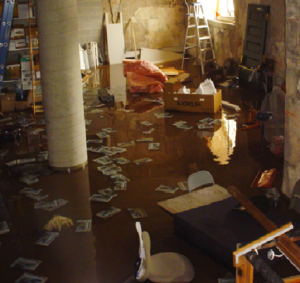Does Climate Change Cause Mold?

For many years it has been a verifiable truth that our climate is changing and the primary cause is manmade via greenhouse gases in the atmosphere. The impact has been articulated in droughts and wildfires in the west, excessive rain in the east, unusually cold temperatures in the northwest, and deep south, rising sea levels and receding shorelines, and a greater number of storms including tropical storms, hurricanes and tornadoes. This has also caused power outages that can last for days or weeks. In my area, tropical storm Ida caused unprecedented flooding that affected millions.
Damage Impact
When damage has been done to a building, be it a house, apartment, condo or commercial building, via wind damage, fire, flooding, or freezing pipes, the structures become exposed to the elements, primarily rain. Frozen pipes will burst and cause severe internal flooding. Water will seep in through foundations and external wall coverings as well as through damaged roofs and windows. Cities with municipal sewers will experience sewage backup.

Mold requires moisture to proliferate. It can be in the form of actual water or it can be in ambient moisture, in other words, humidity. It only takes humidity levels of 60% or so to allow mold spores to grow. So not only when a basement is inundated with standing water will mold most likely grow, but even if a window has been damaged enough to let humid air enter, mold can grow. The longer the water or humid air is allowed to remain inside the building, the greater chance there will be for mold to grow.
The Course of Action to Take
If you experience any water incident such as flooding, a plumbing leak, roof leak, or even the smallest amount of moisture on the floor or wall – it doesn’t take more than a tiny puddle to cause mold to grow, you should be immediately concerned. Even dampness in the air or a musty smell is cause for concern. If it is severe problem such as a flood or sewer backup, a disaster remediation company should be called in to pump out all the water and dry the area up with special dehumidifiers, fans and heaters, as well as remove the lower courses of sheetrock if it is present.

Even if we determine that you do not have a mold problem, we will write a report telling you things you can do to prevent one from developing in the future. Common things typically include waterproofing, dehumidification, proper roof ventilation, removal of vegetation that is too close to the building, checking for potential plumbing problems and having proper bathroom ventilation installed.
Summary
Climate change has impacted the growth of mold in recent years and will most likely continue to do so as the atmosphere and ocean currents get warmer. In order to best protect your home or building from the effects, a licensed mold assessor such as Certified Inspections, Inc. should be contacted for an assessment that will determine whether you currently have a mold problem, how to remediate it, and what you can do to protect your property from developing a mold problem in the future.
